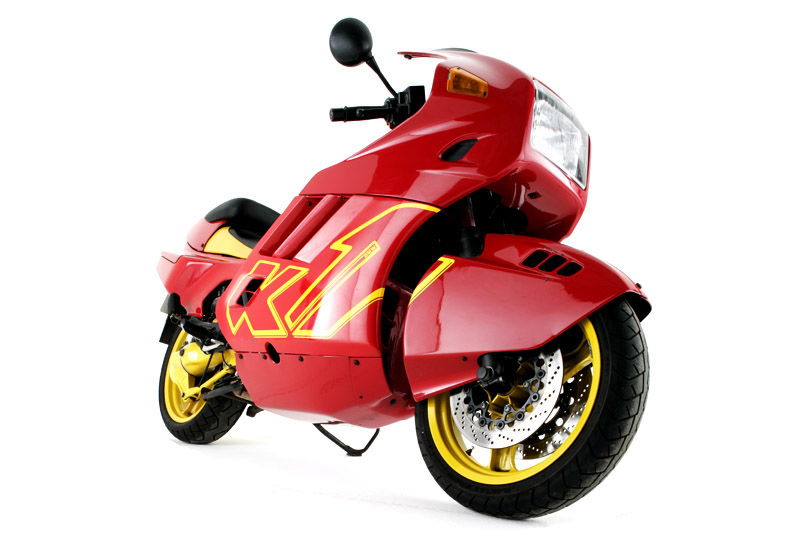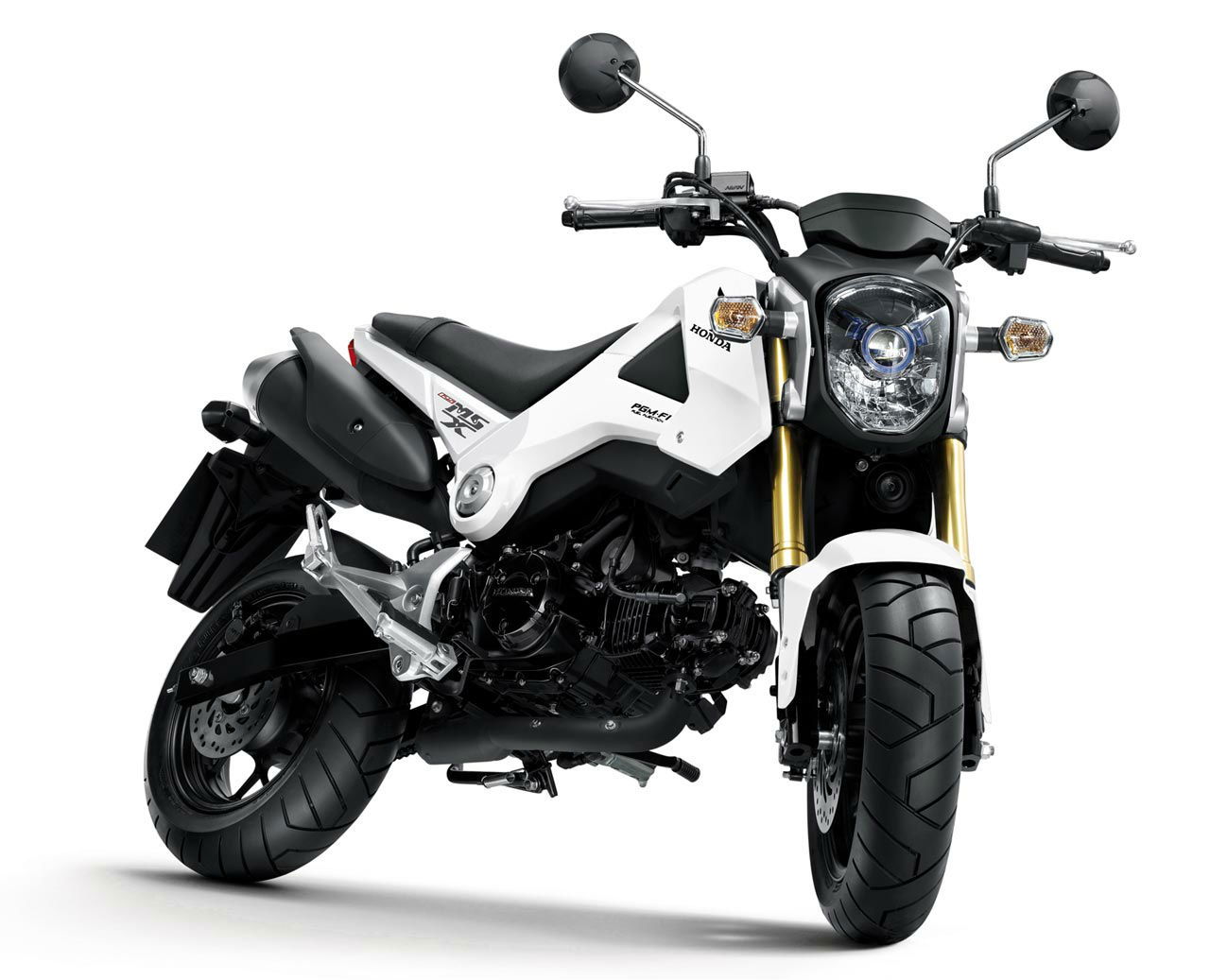Top 10 unlikely classic motorcycles
We know them as classics now, but we didn't see it coming.

WHAT defines a classic bike? Does it have to be technologically ground-breaking? Should it be a head-turning beauty? Made in small numbers? Successful on the track?
Any and all of those attributes can surely be applied, but the creation of a classic isn’t as quantifiable as merely ticking certain boxes. Sometimes, bikes break through to become classics for reasons that are harder to pinpoint.
Before you write to complain, we’re not doubting the classic status of any of the machines listed here. They’re all bona fide collectibles. But they’re models that might not have been picked out as future classics when they were first launched, and often drew derision or – worse – indifference when in the first flush of youth.

10: BMW K1
When BMW designed the K1, ‘aerodynamics’ was the fashionable buzzword of the era. Cd figures for cars were briefly as important as 0-60 times, and no four-wheeled advertising copy was complete without mention of wind tunnels. So it’s understandable that BMW thought it could get an edge on the increasingly-dominant Japanese manufacturers by applying some of that car-inspired aero to its flagship. And it threw on other car-derived ideas like ABS and built-in luggage compartments too.
The K1 was the result, but unfortunately for BMW the aero-obsession in the car market never quite carried over to bikes, where weight, handling and power were more important numbers. And on those fronts the K1 didn’t deliver like some of its rivals.
The quest for wind-cheating ability also took its toll on the styling. Now it’s seen as ‘distinctive’ or ‘unique’ but back in 1988 the word was ‘ugly’. That most carried a paint scheme seemingly inspired by Ronald McDonald didn’t help; everyone knows that clowns are scary. But perhaps it’s all that – the ugliness, unpopularity and the resulting rarity of the K1 when it was new – that now gives it classic status.
Bimotas were virtually guaranteed to be classics from the moment they roll out of the factory gates. Hand-made, limited-production machines, they were traditionally beautiful, fast and sweet-handling, even if they had a tendency to fall apart. One exception must be the Mantra, though. While based on the DB2 – a Ducati-powered machine that exemplified all the usual plusses of Bimotas – the DB3 Mantra spoilt it all with Sacha Lakic’s challenging styling. It was supposed to be a stylish city bike, an upscale Ducati Monster, if you like, but its shapes seemed to be more suited to a jetski than a motorcycle and the result was a fish out of water. Some of the design decisions were plain odd. Four exhaust pipes on a V-twin? Shiny chrome mirrors combined with carbon-fibre bodywork? Burled walnut instrument surrounds? It all takes some getting used to.
Underneath there’s a good bike, and these days the very outlandishness of its styling (again, it was called ‘ugly’ when it was new, but these days you’d use ‘eye-catching’) makes it stand out as a classic.
These days there’s no quibbling over the X7’s classic status. What’s not to like about a 250cc two-stroke twin that was, in its day, a performance bargain. Promising ton-up performance, it was a flyweight machine that packed a then-impressive 30hp and, on pure performance, could blow away an RD250. Some even suggest – with some justification – that the X7 was responsible for the 1983 change in UK learner laws, which saw capacity limits slashed from 250cc to 125cc. So why is it an unlikely classic? Because not long after its early-80s heyday, the X7 looked terribly old-hat. In 1983, the last year of X7 production, Suzuki launched the RG250, which looked and performed like a machine from another galaxy compared to the old X7, offering 50% more power and ushering in the era of two-stroke race-reps. Secondhand prices for the X7 plummeted, and thanks to their fragility their numbers fell away fast. For those who grew up when the X7 was a 17-year-old’s dream bike, they’re a clear classic, but for those just a handful of years younger their appeal is hard to understand.
That the Vespa is a classic goes without saying, but in sharp contrast to many of the other bikes on this list, it’s the very success of the machine that makes its classic status a surprise. The Vespa is an Italian icon, it put millions onto two wheels, but much of its appeal comes not from the bike itself but from the ‘scene’ that it’s associated with. After all, the Vespa’s original design choices were made for economic reasons rather than ones of style – it needed to be cheap and simple, and was designed in the aftermath of WW2 with limited resources in mind. Its route to classic status is like that of the Willys Jeep, the Citroen 2CV or the VW Beetle; the sheer ubiquity of the Vespa means it’s associated with certain periods, fashions, movements and music. The result is an influence that spreads vastly beyond the any objective evaluation of the bike’s ability.
Dragging big-name designers from other fields into the realm of motorcycle styling is a dangerous business. More often than not, it seems that even those with the sharpest eye for style struggle when they’re asked to design a two-wheeler. Just look at Pininfarina’s Morbidelli V8 for confirmation of that. The Aprilia Moto 6.5 was the work of Phillipe Starck, a designer best-known for an Alessi lemon-squeezer (the ‘Juicy Salif’, which is still widely available in case you feel the need for a £50 kitchen ornament that looks like it’s from the set of the ’80s TV adaption of ‘Tripods’). Like the Bimota Mantra, the bike was basically a reaction to the success of the Ducati Monster, and like the Mantra it was widely derided for placing style above substance in the priorities list.
These days, though, attitudes to the Moto 6.5 have softened and its rarity and distinctive looks are likely to bring a price premium.
Check the prices of any of the mid-1980s batch of turbo bikes and it’s clear there hot property now, but when it was launched the CX500 Turbo didn’t get the sort of accolades that you might imagine. It was, arguably, the most accomplished and well-developed of all the turbo machines. Its lack of success is summed up by its production history: launched in 1982, it was heavily updated to the CX650 Turbo in 1983 (reducing the boost and increasing capacity in an effort to combat lag). But that bike also lasted just one year and by 1984 the whole idea had been canned. It just wasn’t as good as the normally-aspirated bikes that were available, from both rivals and Honda itself, at the time. These days, all those non-turbo rivals are just old bikes, though, while the CX500 Turbo is the sort of thing that resides in collectors’ climate-controlled garages.
The RE5 is famous for its Wankel rotary engine, but in reality was another bike that was disappointing, short-lived and little-loved in its heyday.
In fact, its history rather reflects that of the CX500 Turbo. Like the Honda, it was launched in a flurry of publicity (albeit 8 years earlier, in 1974) that focussed on its radical powerplant. The Wankel rotary was the engine of a future that never arrived, though. The initial version was styled by car designer Giorgetto Giugiaro, who tried to mimic the rotary theme on the barrel-shaped tail light and instrument cluster (complete with weird, flip-up tinted Perspex cover that was supposedly intended to prevent the instruments from fading in sunlight). A year later it was toned down with conventional clocks and lights, and a year after that, the RE5 was gone. The simple fact was that its stablemate, the GT750 two-stroke, was just a better bike and had an exotic engine of its own to crow about.
These days, though, the RE5’s weird engine and rarity means it’s desirable for reasons other than its ability or appearance.
How dare we suggest that the Bonneville’s classic status is unlikely? Well, it’s because it was a slow burner rather than a bike that made its debut with a blaze of publicity. In fact, Motor Cycle News, Britian’s leading biking newspaper back in 1958 when the T120 Bonnie was first shown, barely batted an eyelid when it was unveiled. It was, after all, merely a retuned version of the Tiger T110 that had already been on sale since 1954.
So why is it such a legend now? It turned out that the Bonnie was better than that low-key introduction promised, and it improved with time and further development. These days those first bikes might be collectable classics, but back in the late 1950s nobody would have guessed that would be the case.
The Yamaha R7 is a glorious bike, no question about it. And it was a classic from day one, too, with collectors rushing to buy up the limited-edition homologation specials. Even now, zero-miles ones that have been stored away since they were new by speculators crop up fairly regularly. So what makes it an unlikely classic? Well, the simple fact that it has managed to remain one of the most desirable bikes of its era despite the fact it never achieved the targets it was designed for. Specifically, it never won a WSB title. While other machines from the same period, like Honda’s RC45 or Ducati’s 916, can lean back on their racing heritage, the R7 must rely on its MotoGP-derived chassis design and drop-dead-gorgeous styling for its classic credentials. It’s proof that race success isn’t necessary for a classic, even when that was what it was purpose-designed to achieve. For instance, you could buy several Honda VTR1000R SP1 or SP2 models, complete with WSB-winning heritage, for the price of one Yamaha R7…
When the Honda Cub was designed there was no intention that it would be anything other than a utilitarian vehicle. It wasn’t ‘styled’ so much as forged for a particular purpose. It had little discernible performance, not much in terms of handling and all the sex appeal of a fridge. It was cheap, reliable and very useful, though. Like a fridge. Now, 60 years on from its introduction, the Cub is a true classic, even if it’s not one that will ever capture the crazy prices of some of the other machines on this list. Nobody at its unveiling could ever have guessed the Cub’s influence or that it would become the best-selling motor vehicle of any sort ever to be built.
While some of the bikes on this list are unlikely classics because their ‘classic’ status is hard to explain, with the Cub it’s easy to understand. It’s a classic that’s earned that tag, against all odds, rather than getting it mysteriously bestowed upon it.
CLICK HERE FOR MORE VISORDOWN TOP TENS.

